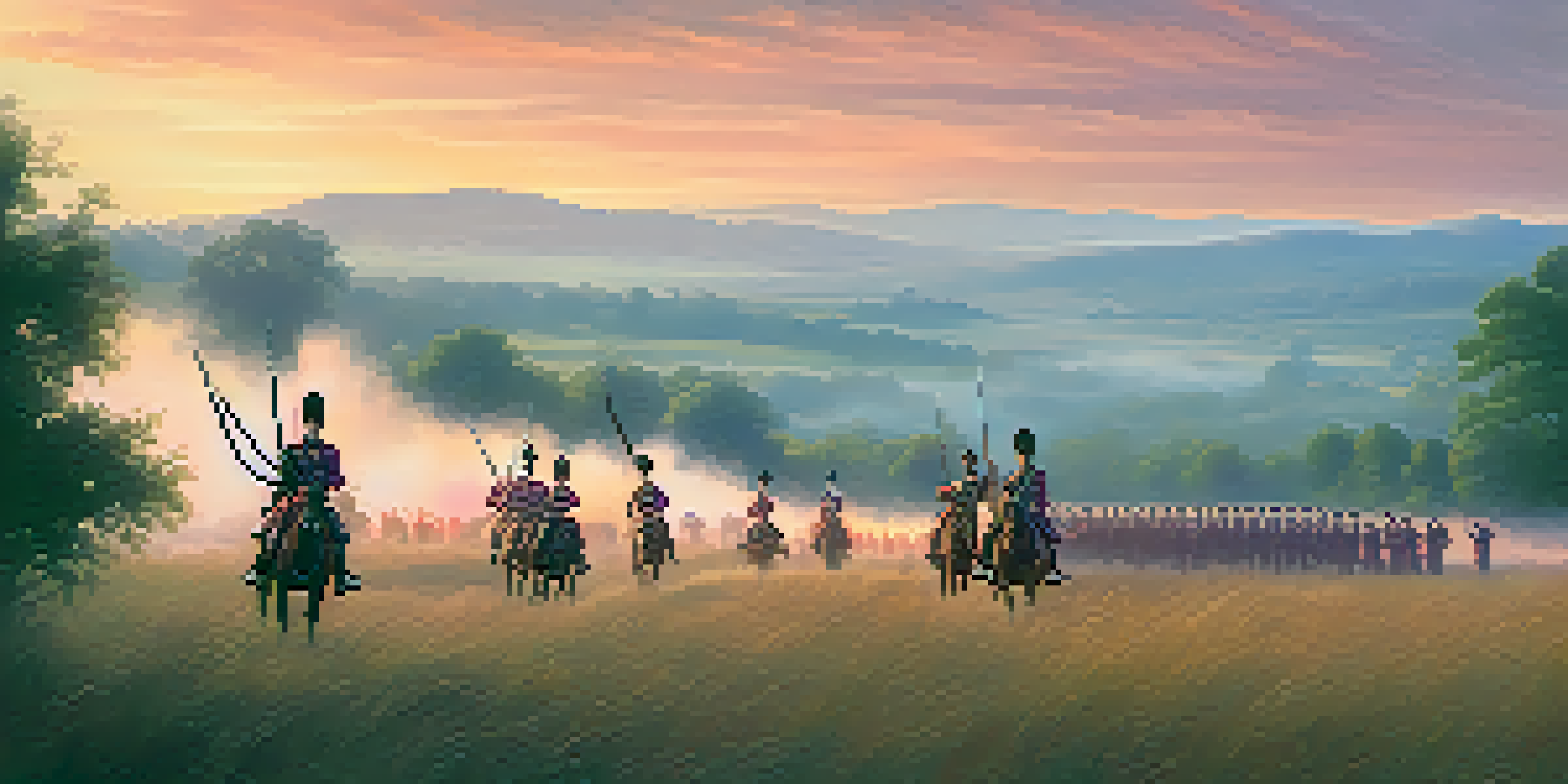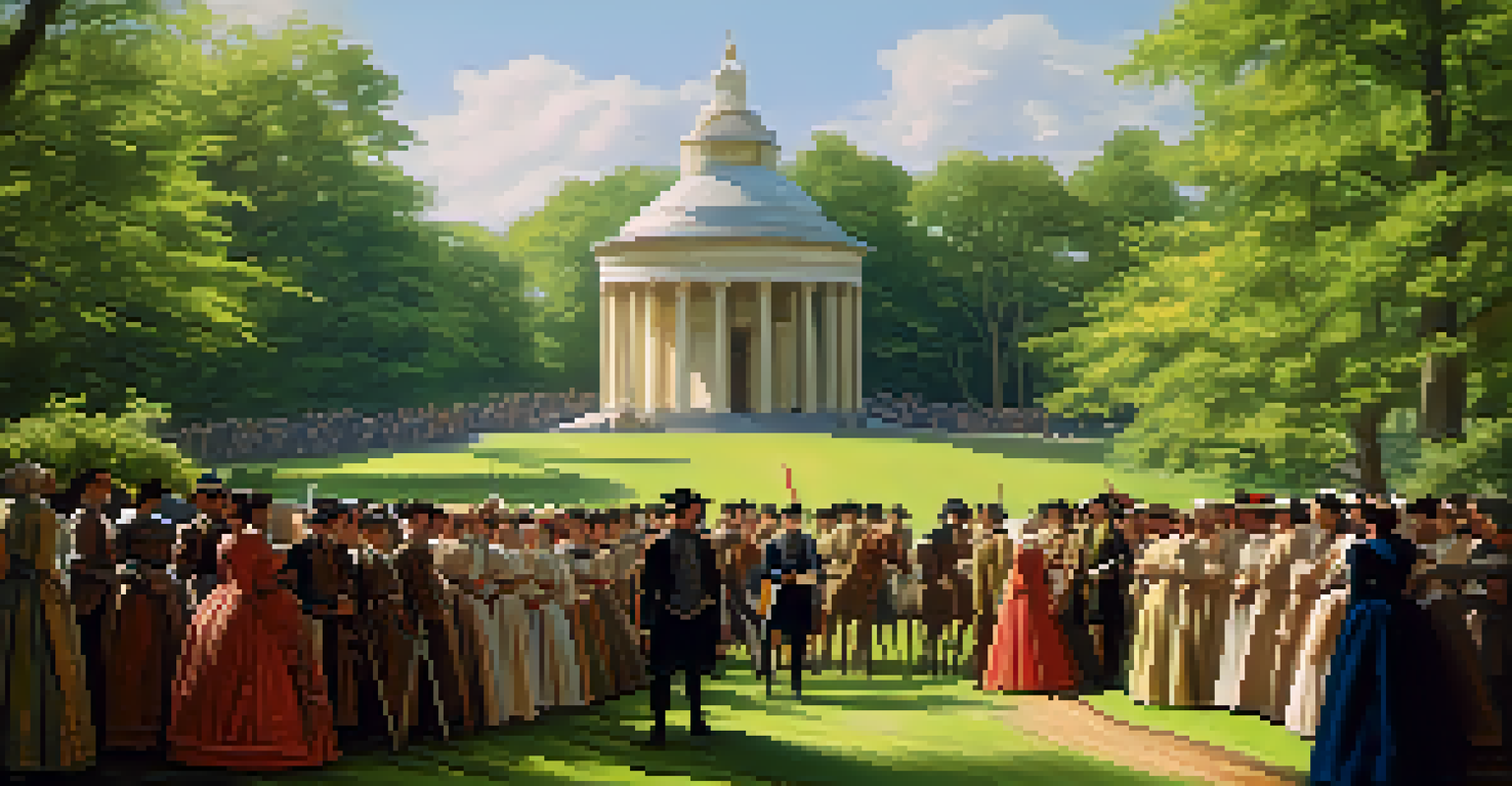Cinematic Truths: The Representation of History in Films

Understanding Cinematic Truths in Historical Narratives
Cinematic truths refer to the way films interpret and represent historical events. Unlike documentaries that aim for factual accuracy, narrative films often prioritize storytelling, leading to a blend of fact and fiction. This artistic license can result in compelling narratives that resonate emotionally, even if they stray from historical accuracy.
Cinema is a matter of what's in the frame and what's out of it.
For instance, movies like 'Gladiator' and 'Braveheart' depict historical figures and events but take creative liberties for dramatic effect. While these films spark interest in their respective eras, they also raise questions about the authenticity of their portrayals. Understanding these cinematic truths helps audiences appreciate the balance filmmakers strike between entertainment and history.
Ultimately, cinematic truths challenge viewers to think critically about the events they see on screen. By examining how films represent history, we can uncover deeper meanings and understand the filmmakers' intentions, enriching our viewing experience.
The Role of Creative License in Historical Films
Creative license allows filmmakers to modify historical facts to enhance storytelling. This practice can lead to more engaging narratives but can also distort the truth. For example, while 'The Patriot' delivers an emotionally charged story about the American Revolution, it simplifies complex historical realities for dramatic purposes.

Some might argue that such alterations undermine the educational value of history in films. However, others believe that these adaptations can spark interest in real historical events. They often encourage viewers to seek out the actual history behind the cinematic representation, fostering a deeper understanding of the past.
Cinematic Truths Blend Fact and Fiction
Films often prioritize storytelling over factual accuracy, leading to a mix of historical truths and creative liberties.
Ultimately, creative license is a double-edged sword. It can either enrich the narrative experience or blur the lines between reality and fiction, leaving audiences to navigate the murky waters of historical accuracy.
The Impact of Historical Accuracy on Audience Perception
The degree of historical accuracy in films significantly impacts how audiences perceive and remember events. When films closely adhere to historical facts, they can serve as powerful educational tools. For example, 'Schindler's List' is often lauded for its commitment to portraying the Holocaust accurately, leaving a lasting impression on viewers.
Stories can conquer all learning, and the ability to tell a story is a great gift.
Conversely, films that take significant liberties can lead to misconceptions about historical events. The portrayal of figures like Napoleon in various films often skews public perception, leading to a distorted understanding of history. This discrepancy underscores the importance of questioning the narratives presented on screen.
By critically engaging with the films we watch, we can better understand how narratives shape our collective memory. This awareness allows us to appreciate the art of filmmaking while also recognizing the responsibility filmmakers have in portraying history.
The Use of Symbolism and Allegory in Historical Films
Symbolism and allegory are powerful tools filmmakers use to convey deeper meanings in historical narratives. Often, these devices can transcend factual representation to touch on universal themes such as sacrifice, freedom, and justice. For example, 'V for Vendetta,' while set in a dystopian future, draws heavily on historical events to explore themes of oppression and rebellion.
Such films encourage audiences to reflect on their own societal issues by drawing parallels to historical contexts. This creative approach can make historical events more relatable and relevant to contemporary viewers. The use of allegory often serves as a critique of current situations, inviting dialogue and discussion.
Creative License Shapes Historical Narratives
Filmmakers use creative license to enhance storytelling, which can both engage audiences and distort historical realities.
Ultimately, the artistic choices made by filmmakers can create a rich tapestry of meaning, blending history with personal and political narratives. This fusion adds layers to the storytelling, making historical films resonate on multiple levels.
Documentary Films: A Different Approach to History
Documentary films offer a distinct approach to representing history, often prioritizing factual accuracy over dramatic storytelling. These films aim to educate and inform viewers about real events, people, and places. Examples like '13th' and 'The Act of Killing' highlight critical social issues and historical injustices while maintaining a commitment to truth.
While documentaries may lack the narrative flair of dramatic films, they often provide in-depth analyses that can challenge viewers' perceptions. By presenting interviews, archival footage, and expert commentary, they create a comprehensive picture of historical events. This factual foundation helps audiences grasp the complexity of the issues at hand.
However, even documentaries can be subject to bias, depending on the filmmaker's perspective. Understanding this helps viewers approach these films with a critical mindset, allowing for a more nuanced appreciation of how history is represented in all forms of cinema.
The Evolution of Historical Representation in Cinema
The representation of history in cinema has evolved significantly over the decades. Early films often romanticized historical events, presenting a sanitized version of the past. As societal norms and expectations shifted, filmmakers began to explore more complex and nuanced portrayals, reflecting a broader understanding of history.
For instance, the shift from films like 'The Ten Commandments' to more recent works like 'Dunkirk' showcases changing attitudes toward historical narratives. Today's filmmakers often strive for authenticity, incorporating diverse perspectives and voices that were previously marginalized. This evolution enriches the cinematic landscape and provides a more comprehensive view of history.
Documentaries Offer Factual Insights
Unlike narrative films, documentaries focus on factual accuracy to educate viewers about real historical events and issues.
As audiences become more discerning and demand greater accuracy, filmmakers are held to higher standards. This ongoing evolution reflects not only changes in the industry but also in how society values historical representation in storytelling.
Conclusion: The Balance of Truth and Storytelling in Cinema
In conclusion, the representation of history in films remains a complex interplay of truth and storytelling. While filmmakers often take creative liberties to enhance their narratives, this can lead to both fascination and confusion regarding historical events. Understanding these cinematic truths allows viewers to engage more deeply with the films they watch.
As we navigate the landscape of historical representation in cinema, it’s essential to appreciate the artistry behind these films while remaining critical of their accuracy. By doing so, we can enjoy the emotional impact of cinematic storytelling while acknowledging the responsibility that comes with portraying history.

Ultimately, the balance between truth and storytelling enriches our cultural conversations and helps us reflect on the past. Whether through dramatic narratives or documentary approaches, films have the power to shape our understanding of history in profound ways.